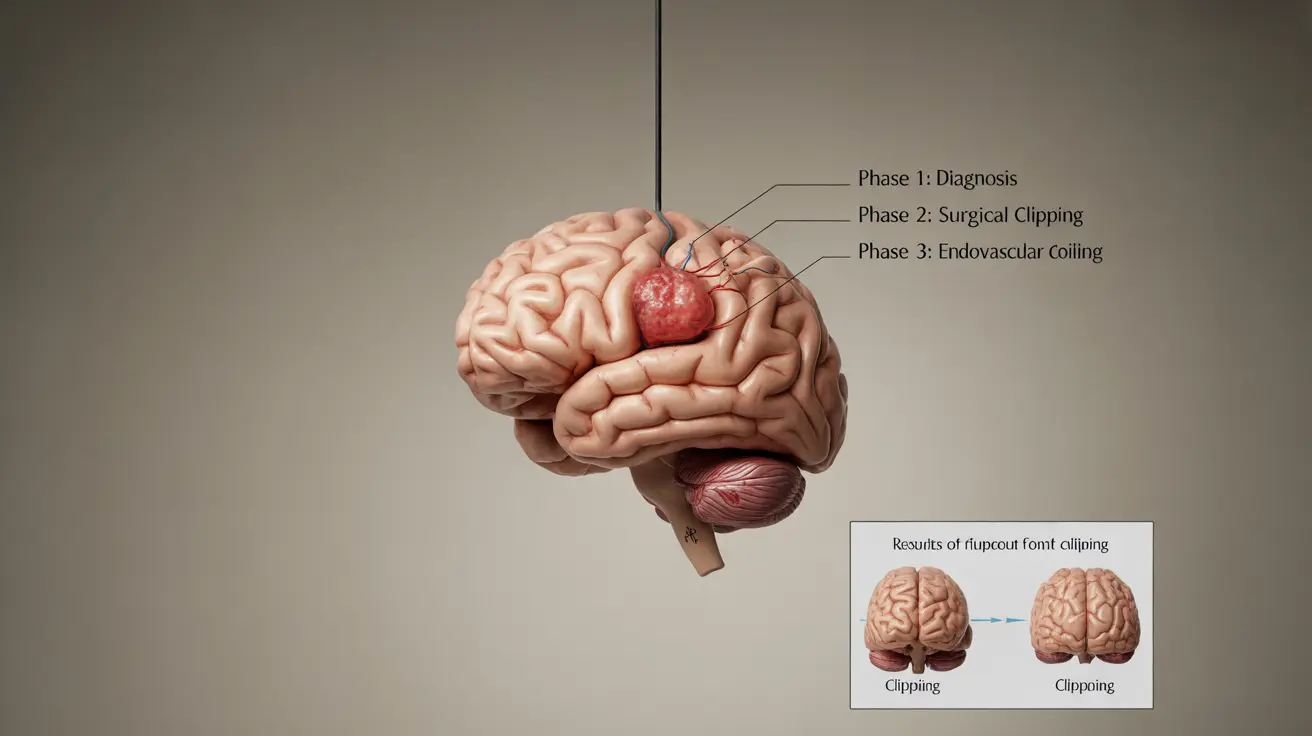A ruptured brain aneurysm is a life-altering medical emergency that requires immediate attention and careful recovery planning. Understanding the journey ahead is crucial for patients and their loved ones as they navigate the path to recovery. This comprehensive guide explores the recovery process, treatment options, and what to expect during rehabilitation.
While each person's recovery journey is unique, having knowledge about the typical timeline, potential challenges, and available support can help create realistic expectations and optimize the healing process.
Understanding the Recovery Timeline
The recovery journey after a ruptured brain aneurysm typically occurs in distinct phases, each presenting its own challenges and milestones. The initial recovery period often takes place in the hospital's intensive care unit (ICU), where medical professionals closely monitor vital signs and neurological function.
Most patients spend between 2-3 weeks in the hospital, depending on their condition and treatment method. Following hospital discharge, the recovery process can extend from several months to a year or longer.
Treatment Methods and Their Impact on Recovery
Surgical Clipping
Surgical clipping involves placing a tiny metal clip at the base of the aneurysm to prevent blood flow. This traditional approach requires a craniotomy and typically results in a longer initial recovery period due to the invasive nature of the procedure.
Endovascular Coiling
Endovascular coiling is a less invasive option where tiny platinum coils are inserted through a catheter to fill the aneurysm. This method often allows for shorter hospital stays and quicker initial recovery, though long-term follow-up is essential.
Common Challenges During Recovery
Recovery from a ruptured brain aneurysm can present various challenges, including:
- Physical symptoms such as headaches and fatigue
- Cognitive difficulties affecting memory and concentration
- Changes in mood and emotional regulation
- Vision problems or sensitivity to light
- Speech and language difficulties
- Balance and coordination issues
Rehabilitation and Support Services
A comprehensive rehabilitation program typically includes multiple therapeutic approaches:
- Physical therapy to restore strength and mobility
- Occupational therapy for daily living activities
- Speech therapy for communication challenges
- Cognitive rehabilitation for memory and thinking skills
- Psychological support for emotional adjustment
Returning to Daily Activities
The timeline for returning to normal activities varies significantly among individuals. Factors that influence recovery include:
- Age and overall health status
- Severity of the initial rupture
- Location of the aneurysm
- Presence of complications
- Quality of rehabilitation support
- Individual dedication to recovery
Frequently Asked Questions
What is the typical recovery timeline after a ruptured brain aneurysm and surgery?
Recovery typically involves 2-3 weeks of hospital stay followed by several months of rehabilitation. Most patients see significant improvement within 3-12 months, though some may continue to make progress beyond this timeframe.
What are the common long-term complications following a ruptured brain aneurysm?
Long-term complications may include persistent headaches, cognitive changes, fatigue, vision problems, and emotional challenges. Some patients may also experience seizures or require ongoing medication management.
How do treatment options like clipping and coiling affect recovery from a ruptured brain aneurysm?
Coiling typically offers a shorter initial recovery period with less invasive surgery, while clipping may require longer hospital stays but provides a durable solution. The choice between treatments depends on various factors including aneurysm location and size.
What kind of rehabilitation therapies help with recovery after a ruptured brain aneurysm?
Rehabilitation typically includes physical therapy, occupational therapy, speech therapy, cognitive rehabilitation, and psychological support. The specific combination depends on individual needs and challenges.
What factors influence the chances of returning to normal activities or work after a ruptured brain aneurysm?
Success in returning to normal activities depends on factors such as age, overall health, rupture severity, treatment type, rehabilitation engagement, and support system strength. Many patients can return to modified or full activities within 3-12 months.
Recovery from a ruptured brain aneurysm requires patience, dedication, and comprehensive support. While the journey can be challenging, many patients achieve significant improvement through proper medical care, rehabilitation, and personal determination.




